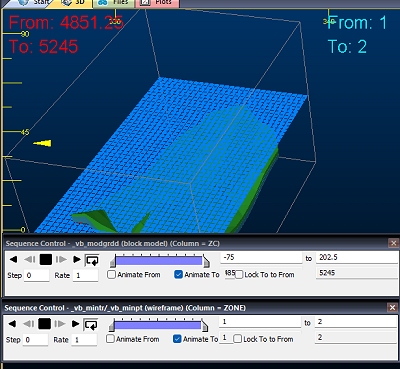|
|
String Properties - General An explanation of fields and properties |
String Properties Dialog - General
To access this dialog:
-
Double-click any strings object type in a 3D or Map view node of the Project Data control bar.
-
In the Sheets control bar, active 3D window, Strings sub-folder, right-click a strings object, select Properties,
The Strings Properties - General dialog is used to define display, string following, name and sequencing settings for the selected string.
|
|
The settings described here apply to the currently active 3D window and all linked external windows. Independent windows will be unaffected. |
Field Details:
Name: displays the current name of the selected data object overlay. You can edit this name and click OK or Apply to change the model file name within the project. Note that editing the name of a 3D object will not affect the description assigned to the underlying (Source) file - see below. You can edit this if you like, which is the same as using the Sheets control bar menu's Rename option.
Source: shows the name of the loaded object from which the current 3D overlay was derived.
Sequence Column: select a data column from the dropdown for use in sequence animation.
Sequence Options: when a Sequence Column has been defined (see above), the following options are available:
Forward: animate the data file according to the increasing value of the selected attribute column.
Single Frame: replace instead of adding to displayed view frames.
Reverse: select this option to play the sequencing animation in reverse, i.e. from the highest record to the lowest record value in the Sequencing Field.
Anim. Rate: this value represents the 'speed' at which the 'steps' are played. The most appropriate value depends on many factors, including the density of the data and how many 'steps' are in a particular animation.
Anim. Step: this value determines the step size in the animation and equates to the number of records displayed/hidden for each frame. It is based on the values in the selected Sequence Column.
Loop Animation: select this checkbox to replay your animation from the beginning once the final 'frame' has been displayed.
Annotate: select a field from the object that will be shown as on-screen annotation during sequence playback. Select the Show Annotation check box to annotate the wireframe with sequence column data. You can control the formatting of the on-screen annotation using the Configure button to display the Sequence Annotation Overlay dialog. Select Configure to define the annotation's font, position and display text parameters, using the Sequence Annotation Overlay dialog.
In the example below, an
annotation attribute has been defined for a block model (IJK) and a wireframe
(ZONE). Each object is supported by its own Sequence Control bar below.
The annotation is displayed for both objects (although configured differently
for each). When the sequence slider of either object is adjusted, the
corresponding annotation will be updated automatically. 
This can be useful for interrogating data with respect to particular attribute
values, or combinations of values. For example, you could render a block
model using two separate overlays (by copying one), then sequence model
1 based on a grade value and model 2 on a density value.
String Following: these options control how an object behaves during movement along a string (only if it is used as an alignment string for a flight or drive path for a VR Object in a simulation):
-
Loop: continuously loop objects following this string in simulations.
-
Return Trip: return along alignment string from ends.
-
Offset: stagger objects by a fixed distance following this string in simulations.
|
|
Related Topics |
|
|
String PropertiesString Properties Dialog - Lines TabString Properties Dialog - SymbolsTabStrings Property Dialog - Labels TabAssociated files dialogInfo Mode List Dialog |

